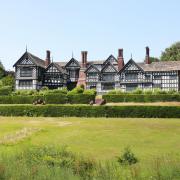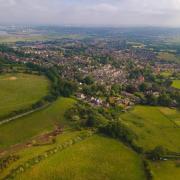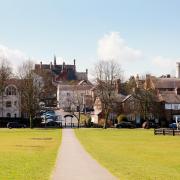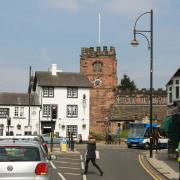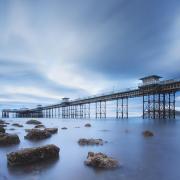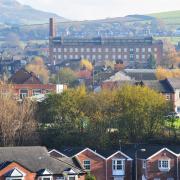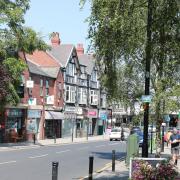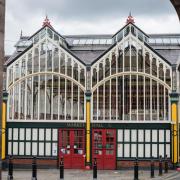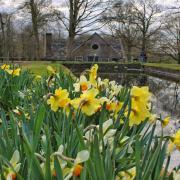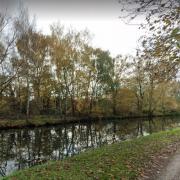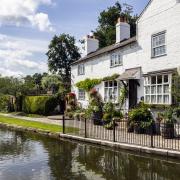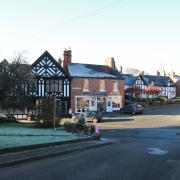There are so many reasons to enjoy North Wales and here are seven of them

WHERE IS IT? Abersoch is a coastal seaside resort on the east facing south coast of the LL?n Peninsula
WHY WE LOVE IT Life’s a beach at Abersoch with its watersports and festivals, laid back vibe and beautiful coastline. It’s a chilled out slice of paradise on the LL?n Peninsula, where days can be spent sailing the waters and soaking up the sun in its very own micro climate. Many Cheshire residents have of course fallen head over heels in love with this delightful village and harbour with its brightly painted beach huts and dramatic vistas and return year after year. There’s certainly a jam-packed calendar of events to keep visitors here amused, including the Glass Butter Beach Festival and the Abersoch Regatta in August, Abersoch mini jazz festival in September and the West Coast Surfing contest in October. Like every holiday hotspot there are small shops in their infinite variety, as well as a wide range of places to eat and drink. Choose from a pretty bistro specialising in freshly caught fish, a welcoming pub or a neighbourhood Italian. Enjoy cafe culture whilst people watching or sit on a terrace sipping a cocktail as the sun goes down. For those who want to immerse themselves in the natural wonders of this special location it’s easy to hop on a boat and take a trip around St Tudwal’s Island to watch the seals and other wildlife, while Snowdonia is in close proximity and on a clear day it is possible to see the magnificent Mount Snowdon in the distance.

WHERE IS IT? This former county town of Anglesey is located in the commote of Dindaethwy and historic rural deanery of Tindaethwy at the eastern entrance of the Menai Strait, which separates the island from the coast of North Wales
WHY WE LOVE IT There are many reasons to love Beaumaris but it is its long history with impresses first of all. Beaumaris castle was built on a marsh and that is where it found its name: the French builders called it beaux marais which translates as ‘beautiful marshes’ and it is an undeniably stunning part of the country. It’s a terrific place to explore and soak up the heritage. From notable buildings like the castle courthouse built in 1614, the 14C St Mary’s parish church, the 14C Beaumaris gaol and the 14C Tudor Rose which is one of the oldest timber-framed buildings in Britain, this is a location groaning with history. But this isn’t the past in a state of preservation. Beaumaris is a beautiful thriving place to live and work. Of course, all of this adds up to its reputation as a holiday idyll. Scenic sums up the coastline, the delightful sight of yachts and pleasure vessels sailing around the picturesque pier. It’s a wonderful place to kick back and relax, dine at a cafe or restaurant and browse around the streets filled with independent shops and galleries. Leave with bags full of fresh produce, traditional sweets, beautiful homewares or something new to wear. Beaumaris has it all.

WHERE IS IT? It’s a village nestling in the Conwy valley around 17 miles from Conwy itself.
WHY WE LOVE IT Put simply - it’s beautiful. And judging from the preponderance of shops devoted to all things outdoors all that natural loveliness exerts a gravitational pull for walkers, climbers and adventurers. It’s North Wales’ most popular inland ‘resort’ the principal village of the Snowdonia National Park and its popularity hasn’t waned since Victorian times. This is a gorgeous area with cascading waterfalls, hill-top lakes, river pools and ancient bridges. Ever since Victorian artists pulled out their sketchbooks and formed the first artist’s colony here it has been a mecca for those who appreciate nature in all her glory. But while there’s no doubt it is geared up to those who appreciate the great outdoors you don’t have to be Bear Grylls to enjoy what’s here. Crafts and outdoor shops in the village and the nearby Swallow falls are here for all to appreciate. The main street, Holyhead Road, has numerous inns and bed-and-breakfasts as well as those outdoor clothing shops and the tourist centre is there to supply maps and advice on day trips in the area. At the railway station is a museum with a miniature railway, shop and restaurant. The old 14th century church of St Michael’s is one of the oldest in Wales and is worth viewing.

WHERE IS IT? This walled market town is in Conwy County Borough on the north coast of Wales and faces Deganwy across the river Conwy
WHY WE LOVE IT With its foreboding castle and picturesque quay Conwy is one must-see location for anyone visiting North Wales. The castle itself and walls were built between 1283 and 1289 as part of Edward I’s conquest of Wales and prove an impressive sight but on the other end of the spectrum the town also boasts the smallest house in the UK. With just space enough for one stove, a water tap, a bedside cabinet and a bed the house was inhabited until 1900 when the owner a 6ft 3inch fisherman called Robert Jones had to move out when it was declared unfit for human habitation. Owned still by Jones’s ancestors it is an attraction to rival Conwy Castle itself. Indeed the town seems rather famed for its houses. Across the estuary of the River Conwy there is the lovely Bodysgallen Hall, now a hotel, which incorporates a medieval watchtower that was later used as a signal place for the castle. And the National Trust-owned Abercowy House is notable as Conwy’s only surviving 14th-century merchant’s house, one of the first buildings built inside the walls of the town. Another fine house open to the public is Plas Mawr, an Elizabethan relic built in 1576 by the Wynn family, which has been extensively refurbished to its original 16th-century appearance and is now in the care of Cadw, the Welsh Government’s historic environment service.

WHERE IS IT? Llandudno, “Queen of the Welsh Resorts”, a title first applied as early as 1864, is now the largest seaside resort in Wales, and lies between the Welsh mainland and the Great Orme. It is historically a part of Caernarfonshire.
WHY WE LOVE IT Largely unchanged for more than a century, Llandudno remains a major attraction for those who live in Cheshire. A short drive away and you can be strolling along the town’s elegant promenade past pastel-hued hotels enjoying the pleasures of an authentic British seafront. Its pier is the longest in Wales and there’s a real sense of its Victorian past in attractions like Punch and Judy shows, fairgrounds and donkey rides. Impressively framed by The Great Orme and Little Orme is the ever popular North Shore Beach and there’s a second beach here too called the West Shore, where Alice Liddell, the little girl who inspired Lewis Carroll’s Alice in Wonderland, holidayed as a child. This literary connection has now resulted in a heritage trail where visitors can retrace her steps past key landmarks of the resort. The Victorians of course loved to shop and Llandudno continues to attract those with cash to spend with a mix of modern malls and speciality retailers. Llandudno isn’t just a holiday destination but a key shopping location for those who live and work in North Wales, however you can take it slowly as there is so much to enjoy here, from delicatessens selling cheese, chutneys preserves and cakes to galleries selling studio pottery or hand-crafted textiles. And finally when you’re laden with goodies it’s a fine place for lunch or supper. Posh fish and chips on the seafront is one of life’s pleasures, however there is a great variety of eating to be had here from hearty pub dishes to contemporary cuisine served up in chic surroundings.

WHERE IS IT? Llangollen is a small town and community in Denbighshire, north-east Wales, situated on the River Dee and on the edge of the Berwyn mountains.
WHY WE LOVE IT With its tremendous independent shopping and cosy places to eat and drink Langollen is a destination that deserves attention. The International Musical Eisteddfod and the Fringe festival ensures that spotlight falls on this beautiful town along the sparkling River Dee every year. Pavarotti, Jose Carreras and Katherine Jenkins have all played here but the atmosphere is unique thanks to the warmest reception given to performers and visitors. It really feels like they’re throwing a party for the world. It doesn’t take a festival to entice visitors here. Llangollen has a unique range of locally owned shops providing fresh local produce and groceries and a warm welcome. The wide variety of independent shops, make shopping here great fun. The town has everything from fashion boutiques and shops selling jewellery, gifts and quality crafts to outdoor clothing and equipment and there’s a lovely independent bookshop where you can buy everything from a bestseller to a local history tome. Those who want to build up an appetite for lunch or dinner in one of the superb restaurants can ride the white water, climb high above the valley or cycle along beautiful and challenging trails. Llangollen has been dubbed “a walker’s paradise” not least because of the stunning scenery, including the most dramatic section of the Offa’s Dyke path and you can have an enjoyable afternoon on the local steam train or taking a horse-drawn canal boat or a trip over the famous Pontcysyllte Aqueduct.

WHERE IS IT? Ruthin is in the county of Denbighshire located around a hill in the southern part of the Vale of Clwyd
WHY WE LOVE IT Ruthin may be a small town nestled amidst a countryside that has remained unchanged for centuries but it is wholeheartedly embracing the digital age big style in a bid to boost tourism. In fact it is one of the first “Wikipedia towns” in the UK. This was achieved by inviting specialists to help convert all the fantastic tourist information and historical information into Wikipedia articles in many different languages then using QR codes (essentially bar codes) all across the town so that information could be accessed directly meaning visitors can get even more out of visiting its remarkable history and beautiful architecture. You can buy everything here, from a pampering session in a local spa to a sheep at its weekly livestock auction. Add to the mix, weekly WI and bric-a-brac markets, monthly produce markets to annual events such as the Graig Aid Charity Music Festival, Flower Show and Gwyl Rhuthun Music Festival and there’s always something to entice the visitor. One major attraction is Ruthin Craft Centre - three galleries, a craft showcase, artist workshops and café brought together in a dramatic zinc and cast stone building, which has gained international recognition. And for those who fancy a taste of the high life there’s dramatic Ruthin Castle. Now an upmarket hotel it celebrates its past in glamorous style, while offering all the creature comforts of the 21st century.










